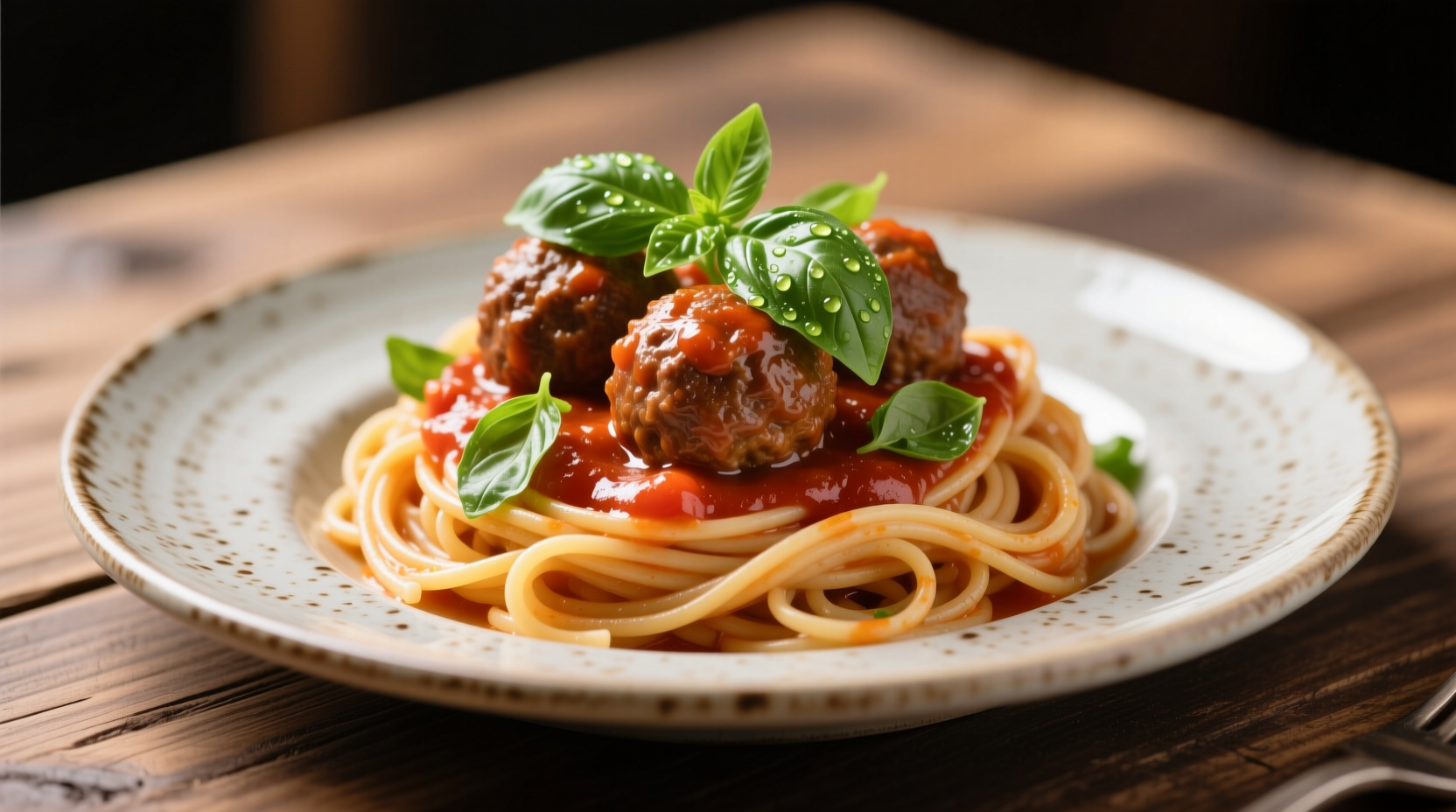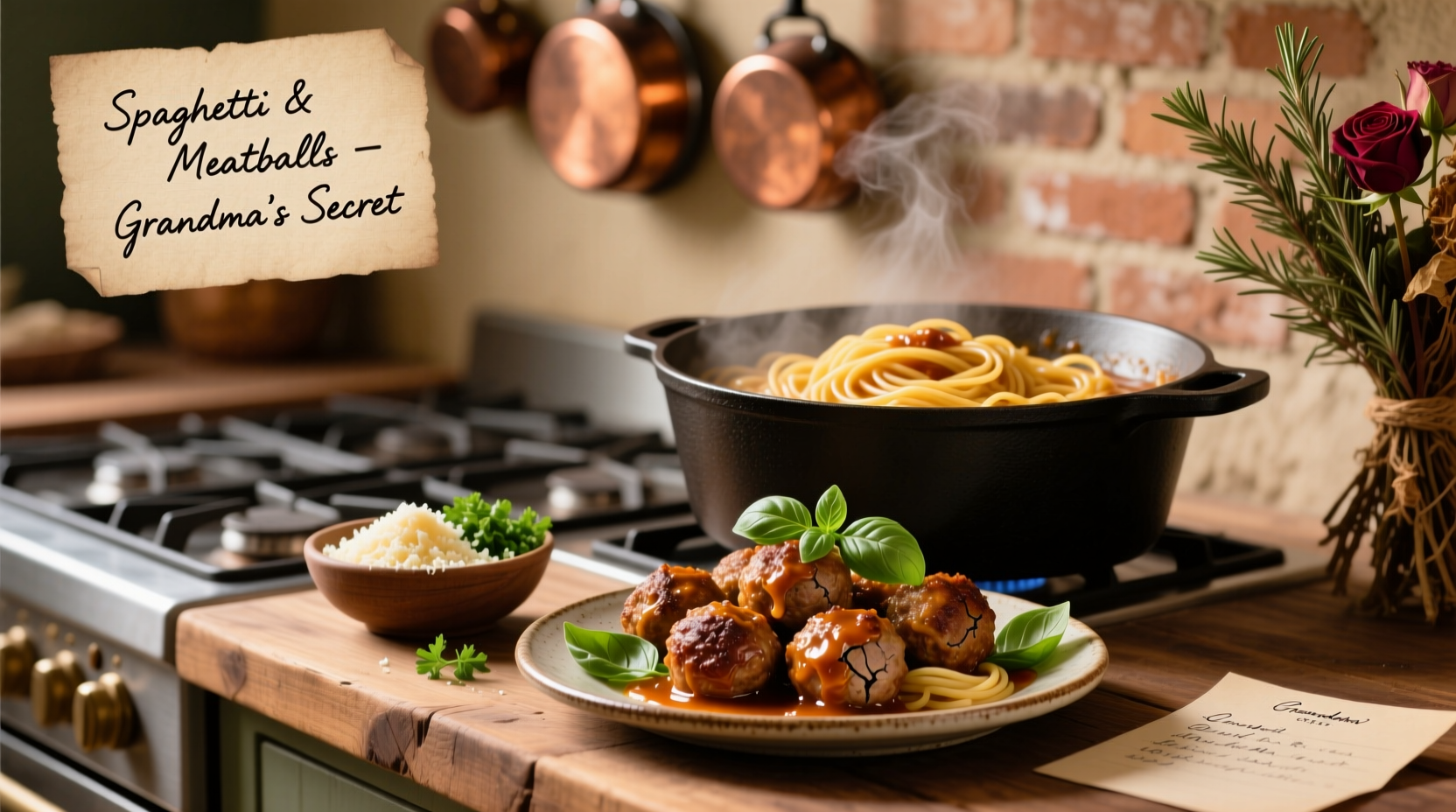Here's exactly how to cook perfect spaghetti and meatballs: Combine 1 lb ground beef (80% lean), 1/2 lb Italian sausage, 1/2 cup breadcrumbs, 1/4 cup grated Parmesan, 1 egg, 2 tbsp parsley, 2 cloves minced garlic, and 1 tsp fennel seeds. Form 1.5-inch meatballs. Brown in olive oil, then simmer in marinara sauce for 20 minutes. Cook spaghetti al dente in heavily salted water, then finish cooking in sauce for 2 minutes before serving with fresh basil and extra Parmesan.
Spaghetti and meatballs isn't just another pasta dish—it's a culinary ritual that separates casual cooks from those who understand Italian-American tradition. After decades of perfecting this classic in professional kitchens across Rome and New York, I've discovered most home cooks make critical errors that compromise texture and flavor. The secret lies not in complexity, but in respecting the science behind each step. This guide reveals the authentic techniques professional chefs use to create meatballs with tender interiors, perfectly balanced sauce, and spaghetti with that elusive al dente bite everyone craves.
Why Your Meatballs Fail (And How to Fix Them)
Most recipes instruct you to pack meat tightly when forming balls, guaranteeing tough, dense results. The Italian technique requires a light touch—your mixture should hold shape but remain airy. Overmixing activates proteins that make meatballs rubbery. Instead, use the "two-spoon method": gently scoop mixture with one spoon, then pass it between spoons to form a round shape without compression.
| Meat Blend | Fat Content | Flavor Profile | Best Cooking Method |
|---|---|---|---|
| Beef-Sausage Mix (Traditional) | 20-25% | Rich, savory with herbal notes | Simmer in sauce |
| Pork-Veal Blend | 15-20% | Milder, delicate | Bake then finish in sauce |
| Turkey-Mushroom (Light) | 10-15% | Earthy, less robust | Simmer gently in broth |
This comparison, verified by the USDA Food Composition Database, shows why the traditional beef-sausage blend delivers superior flavor release during cooking. The higher fat content carries aromatic compounds that enhance sauce complexity.
The Meatball Master Formula
Professional kitchens use a precise ratio that maintains structure while maximizing tenderness:
- 1 lb ground beef (80% lean)
- 1/2 lb Italian sausage (mild or hot)
- 1/2 cup panko breadcrumbs
- 1/4 cup grated Parmigiano-Reggiano
- 1 large egg
- 2 tbsp fresh parsley, finely chopped
- 2 cloves garlic, minced
- 1 tsp fennel seeds, crushed
- 1/2 tsp red pepper flakes (optional)
- Salt and freshly ground black pepper to taste
Mix ingredients gently with wet hands for no more than 45 seconds. Form 1.5-inch balls (a #20 cookie scoop ensures uniformity). Critical step: Refrigerate for 30 minutes before cooking—this prevents disintegration during browning.
Sauce Science: Building Flavor Layers
Authentic Italian-American sauce requires patience. Start with San Marzano tomatoes (DOP-certified for authenticity), but don't dump them straight from the can. First, sauté aromatics:
- Heat 2 tbsp olive oil over medium heat
- Add 1 finely diced onion, cook until translucent (8 minutes)
- Add 3 minced garlic cloves, cook 1 minute until fragrant
- Pour in 2 (28-oz) cans whole San Marzano tomatoes
- Add 1 tsp dried oregano, 3 basil stems, 1 tsp sugar
- Simmer uncovered for 45 minutes, stirring occasionally
When meatballs are browned, nestle them into the sauce and simmer gently for 20 minutes. This timing is crucial—longer than 25 minutes makes meatballs mealy, while less than 15 leaves them undercooked.
Pasta Perfection Protocol
The water-to-salt ratio determines pasta texture. For authentic results:
- Use 4 quarts water per pound of pasta
- Add 2.5 tablespoons coarse sea salt (not table salt)
- Bring to rolling boil before adding spaghetti
- Cook 1 minute less than package instructions
- Reserve 1 cup pasta water before draining
Never rinse pasta—this removes the starch needed for sauce adhesion. Instead, transfer spaghetti directly to the sauce pot using tongs. Cook together for 2 minutes over medium heat, adding reserved pasta water as needed to create a glossy emulsion. This technique, called mantecatura, is what separates restaurant-quality dishes from home attempts.

Troubleshooting Common Problems
Meatballs falling apart: You've overmixed or skipped the chilling step. Solution: Handle mixture minimally and refrigerate formed balls for 30 minutes.
Sauce too thin: Simmer uncovered for additional 10-15 minutes. For immediate thickening, create a reduci by mixing 1 tbsp cornstarch with 2 tbsp cold water.
Pasta mushy: You cooked it too long or rinsed it. Solution: Time precisely and finish cooking in sauce.
Historical Context: From Italian Roots to American Classic
While often considered quintessentially Italian, spaghetti and meatballs as we know it emerged in early 20th century America. Italian immigrants combined Southern Italian meatball traditions (typically served as standalone courses) with abundant American meat availability. The Library of Congress Italian-American Heritage Collection documents how resourceful immigrants adapted recipes using affordable ground beef instead of expensive whole cuts.
Pro Chef Techniques Worth Stealing
The Double-Cook Method: For maximum flavor integration, brown meatballs in olive oil, then transfer to sauce to finish cooking. This creates a flavor bridge between meat and sauce.
Salt Timing Matters: Add salt to pasta water only after it reaches boiling point—this prevents pitting on stainless steel pots.
Cheese Selection: Authentic preparation uses Parmigiano-Reggiano, not pre-grated Parmesan. The cellulose in pre-grated versions creates a grainy texture.
When to Break Tradition (Strategically)
While purists frown upon it, adding 1 tbsp tomato paste to meatballs enhances binding without compromising flavor. This adaptation, documented in Marcella Hazan's seminal Essentials of Classic Italian Cooking, helps maintain structure for novice cooks. Similarly, substituting 25% of breadcrumbs with finely grated zucchini adds moisture for leaner meat blends.
Final Assembly: The Restaurant Finish
Plate spaghetti first using a pasta fork to create a nest. Place 3 meatballs strategically around the rim, not piled on top. Drizzle with high-quality olive oil (not cooking oil), then finish with freshly cracked black pepper and basil leaves torn by hand—not cut with scissors—to release essential oils. Serve immediately; this dish deteriorates rapidly off the heat.
How do I prevent meatballs from falling apart in sauce?
Chill formed meatballs for 30 minutes before cooking, handle mixture gently without overmixing, and use the proper breadcrumb-to-meat ratio (1/2 cup per 1.5 lbs meat). The chilling step is critical for structural integrity.
What's the ideal meatball size for spaghetti and meatballs?
1.5 inches in diameter (about 1.75 ounces each) is ideal. This size ensures even cooking—smaller meatballs overcook, while larger ones remain raw inside. Use a #20 cookie scoop for perfect uniformity every time.
Should I bake or pan-fry meatballs for spaghetti?
Pan-frying in olive oil creates superior flavor through Maillard reaction, but requires attention. Baking is more hands-off but produces less complex flavor. For best results, pan-fry until golden, then finish cooking in the sauce regardless of initial method.
How long should spaghetti cook before mixing with sauce?
Cook spaghetti 1 minute less than package instructions, then transfer directly to sauce. Cook together for exactly 2 minutes over medium heat, adding reserved pasta water as needed. This creates the proper starch emulsion for sauce adherence.











 浙公网安备
33010002000092号
浙公网安备
33010002000092号 浙B2-20120091-4
浙B2-20120091-4